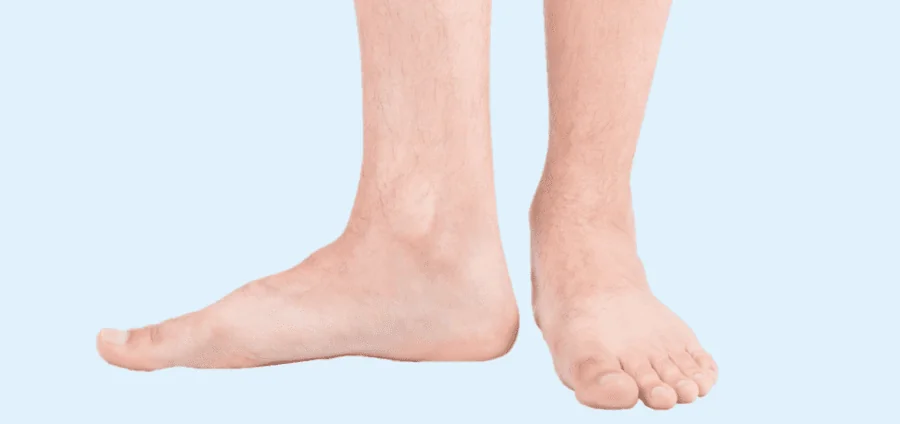
Joint pain, posture problems, osteoarthritis in the knee, or an irregular arch of the foot are often at the root of more problems than you may have expected.
But how does one end up with either a flat foot or a cavus foot? How do these differ from a normal foot?
Let’s take a look at the different types of feet and how they can impact your daily life.
Flat foot
The flat foot is defined by a sagging arch. This type of foot can cause you many problems if left untreated!
If you’d like to know if your feet are flat, simply take a sheet of dark cardboard and place the sole of your wet foot on it.
If you leave an imprint of your entire foot, you most likely have flat feet.
Other than these particular marks, people with flat feet may experience:
- A pained foot devoid of an arch;
- Instability when trying to stand on one foot;
- An Achilles tendon that is often smaller than usual;
- Discomfort that affects other joints like the ankle, knee, and hip;
- Knee valgus;
- Inward curving ankles;
- Pain in the arch of the foot;
- Pain and tension in the lower back.
If you take too long to tend to your flat feet, they can result in uncomfortable complications like:
- Achilles tendonitis;
- Bunion (hallux valgus);
- Metatarsalgia;
- Difficulties keeping your posture;
- Morton’s neuroma;
- Heel spur;
- Plantar fasciitis.
If you let your podiatrist quickly treat your condition, they will be able to provide you with various options to minimize the discomfort caused by flat feet.
Generally, your podiatrist will offer the following treatments depending on the degree of drop in your foot’s arch:
- Custom-made foot orthoses;
- Composite insoles;
- Fitted shoes;
- Corrective bone or ligament surgery.
Cavus foot
Unlike a flat foot, a cavus foot has too much curvature in the arch.
To find out if you have cavus feet, you can perform the same test as for flat feet.
However, this time, a cavus foot will leave a much thinner mark that only shows the tip of the foot and the heel.
Unlike flat feet, cavus feet can be associated with neurological conditions that are beyond your control.
We can recognize a cavus foot by the following characteristics:
- Very stiff;
- A visible bump on the top of the foot;
- Frequent calf cramps;
- A lack of balance when walking;
- Recurring ankle sprains;
- Joint pain in the feet, ankles, hips, and knees;
- Difficulty putting on shoes correctly.
If most of the aforementioned elements sound relatable, it is possible that you are dealing with cavus feet.
In order to avoid any further painful complications, you should contact a podiatrist.
With the help of postural evaluation and 2D / 3D scanning, they will allow you to understand how your feet affect the rest of your body.
Besides joint and muscle pain, the cavus foot can also cause:
- Bursitis in the heel;
- Metatarsalgia;
- Plantar fasciitis;
- Excessive underfoot calluses;
- Postural imbalance;
- Hammertoes;
- A painful bunion (hallux valgus).
Luckily, podiatrists are used to treating this type of deformity and can suggest therapeutic treatments adapted to your situation.
Remedies for cavus feet generally revolve around:
- Manual foot therapy: a series of manipulations performed by your therapist to soften your foot and mobilize your joints.
- Custom foot orthoses: These are specially made to help your feet and improve your posture and lifestyle.
PiedReseau: because not everyone has a regular foot arch
Whether you have a flat or cavus foot, it’s important not to leave your pain unattended.
PiedReseau podiatrists have all the necessary expertise to diagnose a deformity and propose the best possible treatment.
Contact your PiedReseau clinic before the damage is irreversible.